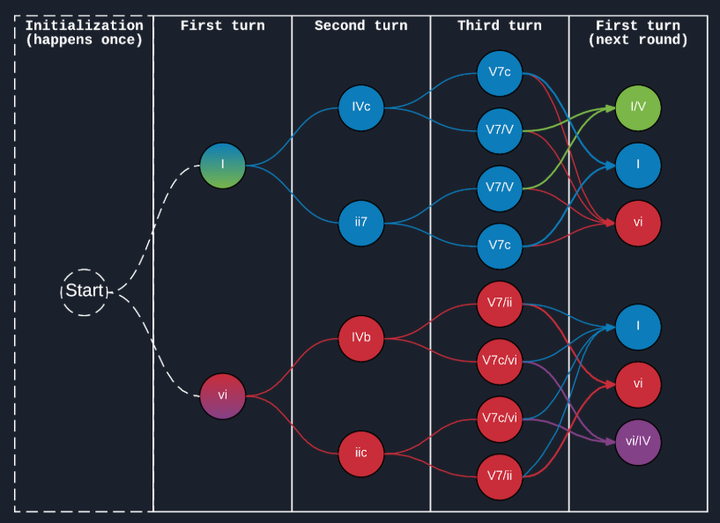Musical Tic-Tac-Toe
 Diagram of the chord progressions that define the game mechanic
Diagram of the chord progressions that define the game mechanicAbstract
The musical Tic-Tac-Toe is a game that aims at developing the aural skills of the players through a competitive game-mechanic, inspired by the well-known game, Tic-Tac-Toe. In the regular Tic-Tac-Toe, each of two players is assigned a symbol and they alternate turns to write their corresponding symbol in a grid. The objective of the players is to fill an entire row, column, or diagonal of the grid with their corresponding symbols. In the musical Tic-Tac-Toe, each of two players alternate turns to play a chord. The objective of the players is to complete a cadential progression with four successive chords. The game is divided into rounds and turns. Each round comprises four turns and starts with one of the players choosing an initial chord, which will be heard by both players. Later, the players alternate to play the subsequent chords. The options for the chords that the players can play in each turn are displayed through the screen of a software interface. The players can read the name of the chord they select, however, they cannot read the name of the chords selected by the other player. In order to determine which chord is the best option for them, the players need to rely on the feedback they get from hearing the chords played by the opposite player. The options presented by the software interface are modeled through a finite state machine, which will force one of the following outcomes after the end of the round: The player who started the round wins (cadential progression) or no player wins. Each round, the players alternate who gets the first turn. The player who wins two out of three rounds wins the game. This game has the objective of sharpening the ability of the players to quickly recognize chords and cadential progressions.